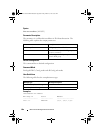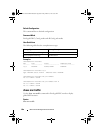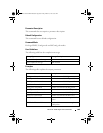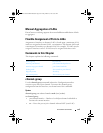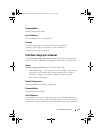
614 Port Channel Commands
• Source/Destination IP and source/destination TCP/UDP Port fields of the
packet.
Enhanced LAG Hashing
PowerConnect devices based on Broadcom XGS-IV silicon support
configuration of hashing algorithms for each LAG interface. The hashing
algorithm is used to distribute traffic load among the physical ports of the
LAG while preserving the per-flow packet order.
One limitation with earlier LAG hashing techniques is that the packet
attributes were fixed for all type of packets. Also, there was no MODULO-N
operation involved, which can result in poor load balancing performance.
As part of Release 4.0, the LAG hashing support is extended to support an
Enhanced hashing mode, which has the following advantages:
• MODULO-N operation based on the number of ports in the LAG.
• Packet attributes selection based on the packet type. For L2 packets,
Source and Destination MAC address are used for hash computation. For
IP packets, Source IP, Destination IP address, TCP/UDP ports are used.
• Non-Unicast traffic and Unicast traffic is hashed using a common hash
algorithm.
• Excellent load balancing performance.
Manual Aggregation of LAGs
PowerConnect switching supports the manual addition and deletion of links
to aggregates.
In the manual configuration of aggregates, the ports send their Actor
Information (LACPDUs) to the partner system in order to find a suitable
Partner to form an aggregation. When the Partner System neglects to respond
using LACPDUs, the PowerConnect switching aggregates manually. The
PowerConnect switching uses the currently configured default Partner Values
for Partner Information.
2CSPC4.X8100-SWUM102.book Page 614 Friday, March 15, 2013 8:56 AM



